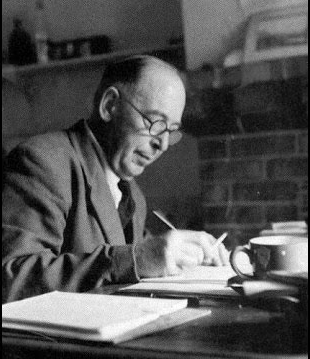
C.S. Lewis and Rereading Stories
Priscilla Collins
In his essay “On Stories,” C.S. Lewis dissects the purpose of a story. Lewis argues that a good story must do more than simply tell of a series of events that leads to an ending. Lewis further conveys that a story should not simply please the reader. More important than the plot is the atmosphere that the author is able to create within each chapter of the book.
Lewis uses the reading experience of one of his students an an illustration of this. While he and his student were discussing books from their childhoods, the pupil describes at length a book by James Fenimore Cooper. The student seemed only concerned with the pure danger the book offered and claimed that is what kept him going back to the story for more.
Although Lewis admits he had not read Cooper’s book, he argues that it could not have been the mere danger of the plot that compelled the reader, but rather the otherworldly atmosphere that immerses the reader when he or she enters the realm of the Native American Indians:
In such a scene as my friend had described, take away the feathers, the high cheek-bones, the whiskered trousers, substitute a pistol for a tomahawk, and what would be left?
Lewis is challenging us to not only look deeper into a story, but to also pinpoint what makes a good story so powerfully irresistible. Through this the purpose of the reading becomes more thrilling than even the most suspenseful plot. Lewis implies that this finding is what allows us to reread a story and truly enjoy it more than we did the first time.
C.S. Lewis, as an author of great stories, gives the reader a lot to digest in “On Stories.” I think many of us are guilty of not truly reading a story and grasping all it has to offer. One of the keys to more fully getting the story is becoming totally involved in the atmosphere. If the author has in fact created another world in the pages of their book, we should be able to experience it with raw emotions. As Lewis argues,
To construct plausible and moving ‘other worlds’ you must draw on the only real ‘other world’ we know, that of the spirit.
Indeed, when we read a good story, the realness of that world allows us to experience the story inside the chapters, while being outside of it enough to truly embrace it. Few, if any, movies can accomplish this. As Lewis describes the moon, we understand more of what he is implying. If we were to experience the moon in reality, we would merely be cold, hungry, and in grave danger. If we read a compelling author’s description of the perils and hostility of the moon’s environment, we can experience something that is similar to these same sensations while taking in the author’s written word.
In applying this to my own reading, Lewis has opened my eyes and made me value the experience of rereading. I am not one to usually read a book again because I have always thought, “I already know the ending.” Now, I realize it isn’t about the ending at all. My best analogy for this in my own life is when I ran a marathon.
My husband and I trained for months, and I had a mentor who helped me prepare. He told me something I will never forget: “The marathon is not the prize, it is only the icing on the cake. The real prize is in all the runs that got you to this point.” The same is true of a good story. The pleasure comes not from the end of the book, but in all the pieces that come together to create it along the way.
(1). Lewis, C.S. Of Other Worlds: Essays and Stories. Ed. Walter Hooper. New York: Harvest Book, Harcourt, Inc. 1994.